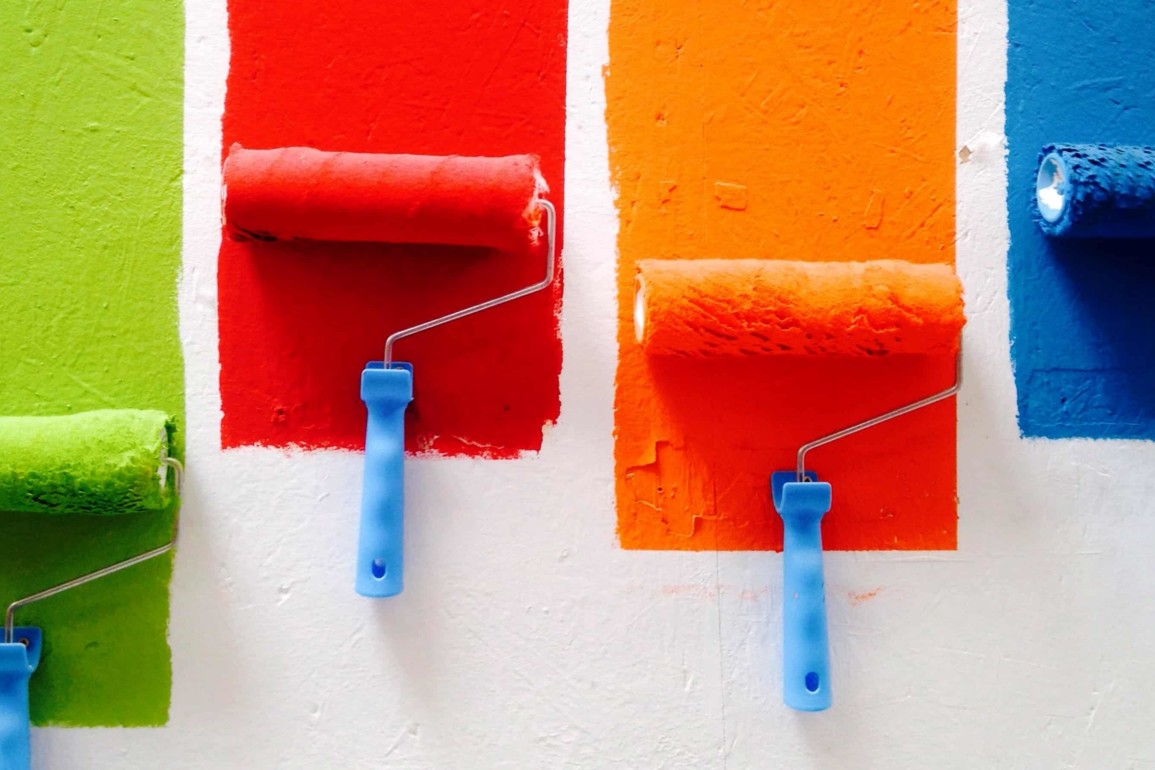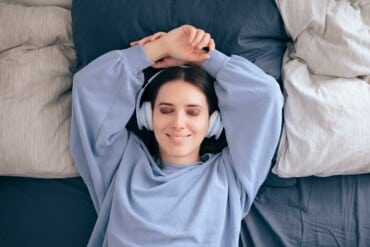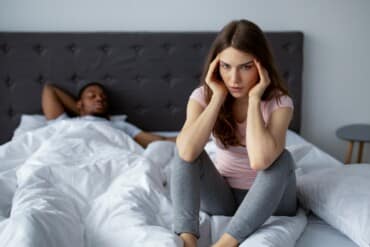Sleep is more important than you think.
There’s more to sleeping than shutting your eyes and “shutting down” for a few hours.
When your body shuts down, your brain goes into overdrive. It’s sorting through your memories for the day, sending out crucial proteins, and ensuring that you’re re-energized for the day ahead.
Unfortunately, while sleep is essential to our health and wellbeing, it’s also incredibly fragile.
Each stage of sleep that you go through at night is crucial to helping you thrive. Anything from the sounds you hear outside, to the amount of light in your room, could disrupt your rest.
Even the color of your bedroom could have an impact on your ability to fall asleep quickly and stay asleep.
Fortunately, we’re going to help you discover the best bedroom colors for sleep, and which peaceful colors will help you to create your perfect space for rest.
Calming colors: Understanding color psychology
Colors aren’t just pretty ways to brighten up a room. The shades you choose for your home can have an impact on your emotion, too, thanks to something called color psychology.
Color psychology is the theory that colors have an impact on your state of mind and emotions. For instance, some studies have shown that looking at the color red will increase your adrenaline levels and heart rate.
If this happens before you go to bed, then the chances are that you’re not going to drift off as easily.
On the other hand, colors like yellow and orange can make you feel warm and happy — which could be great for inducing a good night of sleep.
So, what colors help you sleep?
Well, that will depend partially on your psychological response to different shades. Different people from certain cultures have unique reactions to particular colors.
For the most part, psychologists believe muted and toned down shades are more likely to promote sleep than vibrant ones.
Additionally, there are some specific colors that our brains automatically associate with sleep.
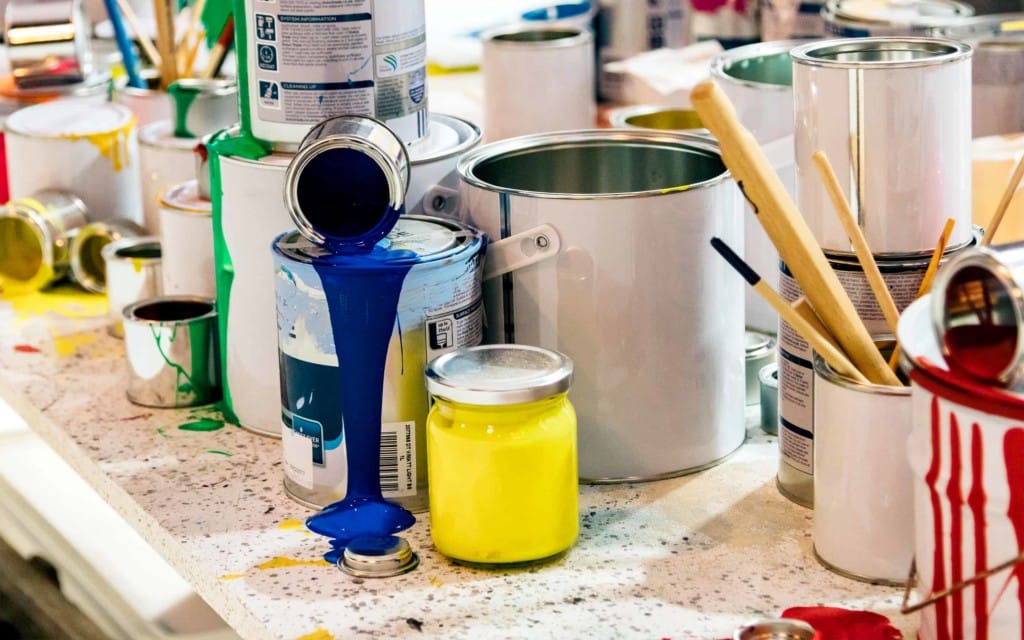
What is the best color for sleep?
Let’s start by looking at the best color for sleep of all: Blue.
Hands down, blue is one of the most peaceful colors out there. As a color, it’s cool, calm, and perfect for encouraging a wonderful night of restful sleep.
What’s more, the human brain is actually more receptive to the color blue than any other shade.
There are special receptors in your eyes called “ganglion” cells, which are sensitive to blue colors.
When your eyes see a shade of blue, they tell your brain that you’re in a calming environment, which reduces your blood pressure, lowers your heart rate, and fights back against anxiety.
Don’t believe that there are colors that promote sleep?
There are studies that prove the fact! A Travelodge survey into 2,000 people from Britain found that people with calming colors like blue in their bedrooms enjoy about 7 hours and 52 minutes of sleep on average every night.
Not only did the people in the study get more sleep with a blue bedroom, but they were also more likely to wake up feeling happy and refreshed too!
Other colors that promote sleep: More options to choose from
Although blue is one of the most popular colors in the world, it’s not everyone’s favorite shade.
If you don’t want to coat your entire bedroom in blue to improve your chances of a good night’s rest, then you could always consider some of the alternative colors that help you sleep.
For instance, studies like the Travelodge research above found that these are some of the best bedroom colors for sleep:
Yellow
Second only to blue, yellow is one of the most peaceful colors for sleep — despite its bright and sunny appearance. Participants in the Travelodge study got up to 7 hours and 40 minutes of sleep in a yellow room, and they loved waking up to happier walls.
Green
We’ve discussed the benefits of having green things (plants and flowers) in your bedroom before, but what about painting your entire bedroom green?
People in a green bedroom slept for up to 7 hours and 36 minutes. Perhaps the reason for this is that green is a color that often reminds us of nature and organic things.
Silver
Probably one of the more modern choices when it comes to picking the best room colors for sleeping, silver is great for a good night’s rest.
Sleepers in rooms with silver shades got up to 7 hours and 33 minutes of sleep on average. It’s a cool and neutral shade, without being dull or boring.
Orange
Although orange is probably not the first color you would pick for a bedroom, it could be a great way to ramp up your sleep quality.
Participants in orange rooms achieved up to 7 hours and 28 minutes of sleep. This shade is warm, happy, and even known for helping with indigestion. If tummy issues keep you awake at night, try painting your room orange (and watching what you eat).
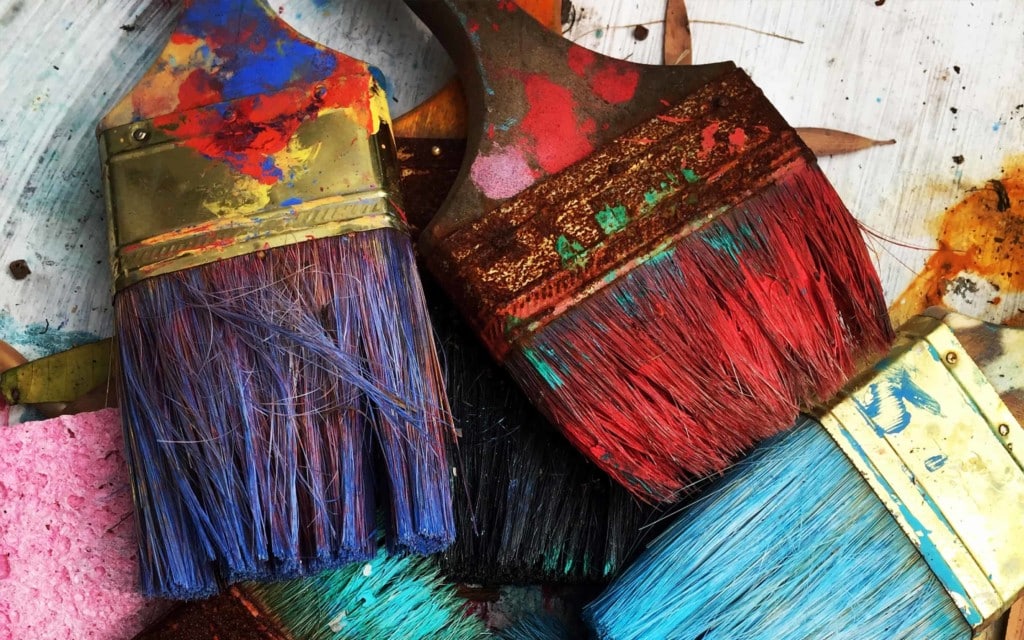
The least peaceful colors: Which shades won’t help you sleep?
Now that you know the best bedroom colors for sleep let’s take a look at some of the shades that are more likely to stop you from getting the quality of rest that you’re looking for.
Just as some calming colors can make it easier for you to drift off into a peaceful evening of slumber, other shades can really reduce the amount of sleep you get.
For instance, the color purple is one of the worst colors for sleep. It’s a mentally stimulating shade that helps to keep the mind awake and encourage creativity.
That might be great for when you’re working or studying — but it’s not going to be much good when you’re trying to fall asleep. Some psychologists even believe that purple could cause you to have more vivid nightmares too.
Grey is another terrible color for sleep. Although it may seem similar to silver at first, gray is uninspiring and depressing.
Participants in a gray room only slept for around 6 hours a night.
Similarly, brown is another drab and upsetting color that could harm the quality of your sleep. Ultimately, most people don’t like the shade brown in the first place.
While a few bits of brown in the form of authentic wood around your bed aren’t going to have a negative impact, brown walls are not a good idea if you’re looking for the best bedroom colors.
Finally, make sure that you avoid red if you need the best color for sleep. Ultimately, red might seem like a great passionate color to have for your boudoir, but it’s also highly stimulating, which means it’s more likely to keep you awake.
Tips on choosing the best bedroom colors for restful sleep
There are lots of great colors for sleeping out there if you’re willing to look for them. Generally, as with any aspect of color psychology, you’ll need to spend some time experimenting to figure out what works for you.
However, for the most part, it’s a good idea to stick to pastel, lighter, or muted shades when you’re decorating your bedroom.
Earthy or neural tones are generally quite calming, as long as you don’t opt for boring old brown.
Additionally, remember to stick with flat paint that doesn’t have a particularly glossy finish. Gloss reflects light, while flatter paints absorb color and feel a lot softer too.
Be careful about the colors you choose for your bedroom accents too. These need to complement each other and appeal parallel to each other on a color wheel if possible. Don’t be afraid to get creative, but avoid contrasting colors that stimulate the mind and eyes.
Additionally, whatever you do, make sure that you stay away from bright colors in the bedroom. While it’s tempting to go wild and throw your favorite shades on your walls — particularly when you own your own house, muted colors for sleep are always more effective.
This is also true when it comes to decorating for children, who generally prefer bright shades.

Making the most of colors for sleep
There’s more to creating the perfect bedroom environment than selecting the best bedroom colors.
The scents that you have around your room, like soothing valerian or lavender make a difference, too — as do the sounds and the amount of light you have in your room. It’s also worth thinking about your décor, and whether it’s more “form” than function.
An impressive, modern-looking bed might appear great at first, but it’s no good if it’s not comfortable when you settle down to go to sleep.
Look for comfort and relaxation when you’re designing the perfect bedroom and save your interior design tricks for other rooms throughout the house.
What are your favorite bedroom colors? Tell us all about them in the comments below.
Siestio. Sleep Matters.
General advice disclaimer
This article contains general tips and advice. However, no diet or exercise program should be started without consulting your physician or other industry professional first. For more information read our full disclaimer here.

